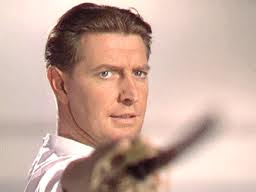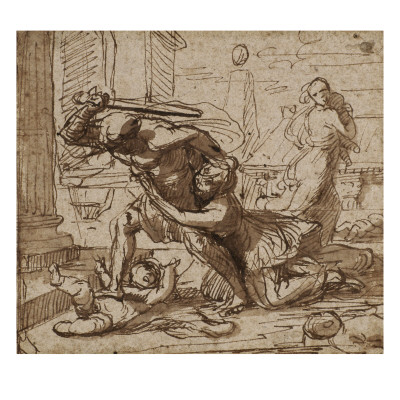
On 15 December at BAM Harvey I attended the performance of Samuel Beckett’s 1958 One-Act Play, Krapp’s Last Tape. John Hurt was Krapp, and in his performance he was precise and chilling, making Krapp rather ascetic and acerbic. In the conversation after the performance Hurt said that he didn’t play the role for laughs though comedic elements are in the opening scene with a banana and the skit of jumping in and out of the spotlight and darkness.
My first experience of Krapp was on the Italian television RAI. As I remembered it, Bert Lahr was Krapp who, in my fading memory, was warmer and more relaxed. I could not find Lahr as Krapp in any performance record. I looked up the Italian title, L’ultimo nastro di Krapp, and I was wrong. Glauco Mauri performed Krapp in 1961 on stage, it must have been telecast shortly later. I was in Italy from January 1962 to August 1963. I was overlaying Lahr in Waiting for Godot on Krapp.
While searching Krapp on video, I discovered that Harold Pinter performed Krapp’s Last Tape at Royal Court in 2006, only two month before his death in December of that year. After ten performances, it was videotaped, and this was available on YouTube in five installments, about ten minutes each. In another YouTube, Ian Rickson, who proposed the event and directed the play, explains tellingly that the the actor started rehearsals soon after a major surgery, and ten performances were absolutely the limit. He acted seated in a motorized wheel chair, and the opening banana and light-and-shadow sequence was evidently omitted (in the video, anyway).
The depth of feeling Pinter brought to the character of Krapp was extraordinary. Pinter, of course, admired Beckett since his youth, but his age and closeness to death may have made the performance especially poignant, though this was probably less than relevant given the superb acting he accomplished with minimal movements, the economy which accords with Beckett’s writing.
The video was shot as a film rather than as a filmed stage play. In general, a stage performance on video is less than satisfactory. But Krapp is an intimate play, best experienced in the first row next to the stage. Watching the videotaped performance of Pinter’s Krapp, I was struck by the intensity of the play and the performance on the screen which I attribute, first, to the use of closeups and, second, on the camera movement. Combined with the gliding movement of the wheel chair, the fluid camera, visualized the inexorable flow of time better than the image of the stage that remained static in its total composition.
The camera, moreover, brings out the facial acting -- subtle but terribly expressive in Pinter’s performance -- in the closely calculated movements of the eyes, the mouth, the cheeks, and now and then the hands. And we listen to the tape as we watch him listening as though we were sitting close to his face rather than watching him listening as a fixed framed picture. As we listen to the tape and Krapp’s reactions and his soliloquies with a concentrated attention (alone rather than sitting among the audience in a theater), we masticate each and every word of Beckett’s carefully weighted writing which passes too quickly in a staged performance as experienced from a seat in the auditorium.
Beckett’s own choice of actor when it was first performed was Patrick Magee, and later Rick Clutchey and John Hurt, among others. I watched them on YouTube, and they are all good in different ways. But Pinter’s Krapp is, in my opinion, unsurpassed.
There is also a YouTube video of an interview in which Pinter comments on Krapp (available, apparently, only with Spanish subtitle), and another of Pinter talking about Beckett earlier on in 1990 when he was 60.
Harold Pinter in Beckett's Krapp's Last Tape:
http://www.superfluitiesredux.com/2010/09/27/harold-pinter-in-krapps-last-tape/
Ian Rickson on directing Pinter in Krapp's Last Tape:
http://www.youtube.com/watch?v=3QzCl-MFlLA
Alan Yentob interviews Pinter on Beckett and Krapp's Last Tape:
http://www.apieceofmonologue.com/2009/09/harold-pinter-on-beckett-and-krapps.html
Harold Pinter tallking about Beckett in 1990:
http://www.youtube.com/watch?v=-N99S8n2TiA











